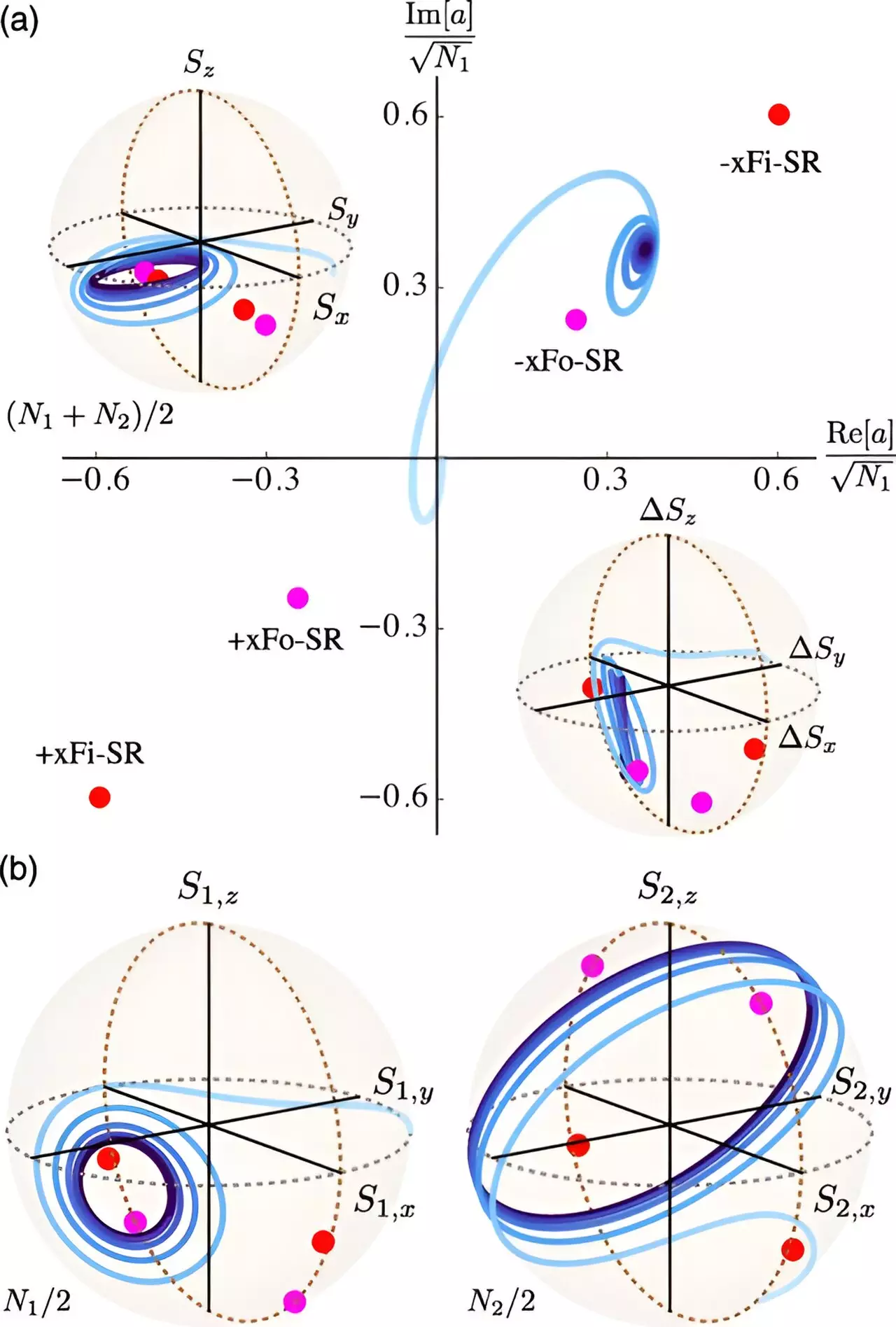Superradiance is a fascinating phenomenon in quantum optics that has been a topic of interest for theoretical physicist Farokh Mivehvar. In simple terms, it can be visualized as atoms acting like tiny antennae that emit light more efficiently when they are closely located to each other within a quantum cavity. This synchronization of atomic antennae leads to the emission of light with an intensity that is proportional to the square of the number of atoms, as opposed to independent atoms radiating in isolation.
The Study of Two Collections of Atoms
Mivehvar’s recent work delves into the interaction of two collections of atoms, each containing a different number of atoms (N1 and N2), inside a quantum cavity. These atoms are closely located to each other and have the capability to emit light superradiantly. However, the challenge lies in understanding how these two sets of atoms, acting as giant antennae, can emit light simultaneously within the cavity.
Through his theoretical considerations, Mivehvar has identified two distinct ways in which the giant antennae of the two atomic ensembles interact in terms of light emission. The first scenario involves cooperation, where the antennae combine to form a super-giant antenna that emits light even more efficiently. On the other hand, the second scenario involves competition, where the giant antennae interfere destructively, leading to the suppression of superradiant light emission. Interestingly, when the two ensembles have an equal number of atoms, the superradiant light emission is completely inhibited.
Complex Light Emission Patterns
Mivehvar’s research also uncovers cases where the light emission from the two giant antennae is a superposition of the cooperative and competitive behaviors, resulting in an oscillatory character. This complexity in light emission patterns adds another layer of intrigue to the phenomenon of superradiance in quantum optics.
The model and predictions proposed by Mivehvar can be applied in state-of-the-art cavity/waveguide-quantum-electrodynamics experiments, providing a practical framework for observing and analyzing superradiance in action. Furthermore, these findings may pave the way for advancements in the development of superradiant lasers, opening up new possibilities for efficient light emission and control in quantum devices.


Leave a Reply